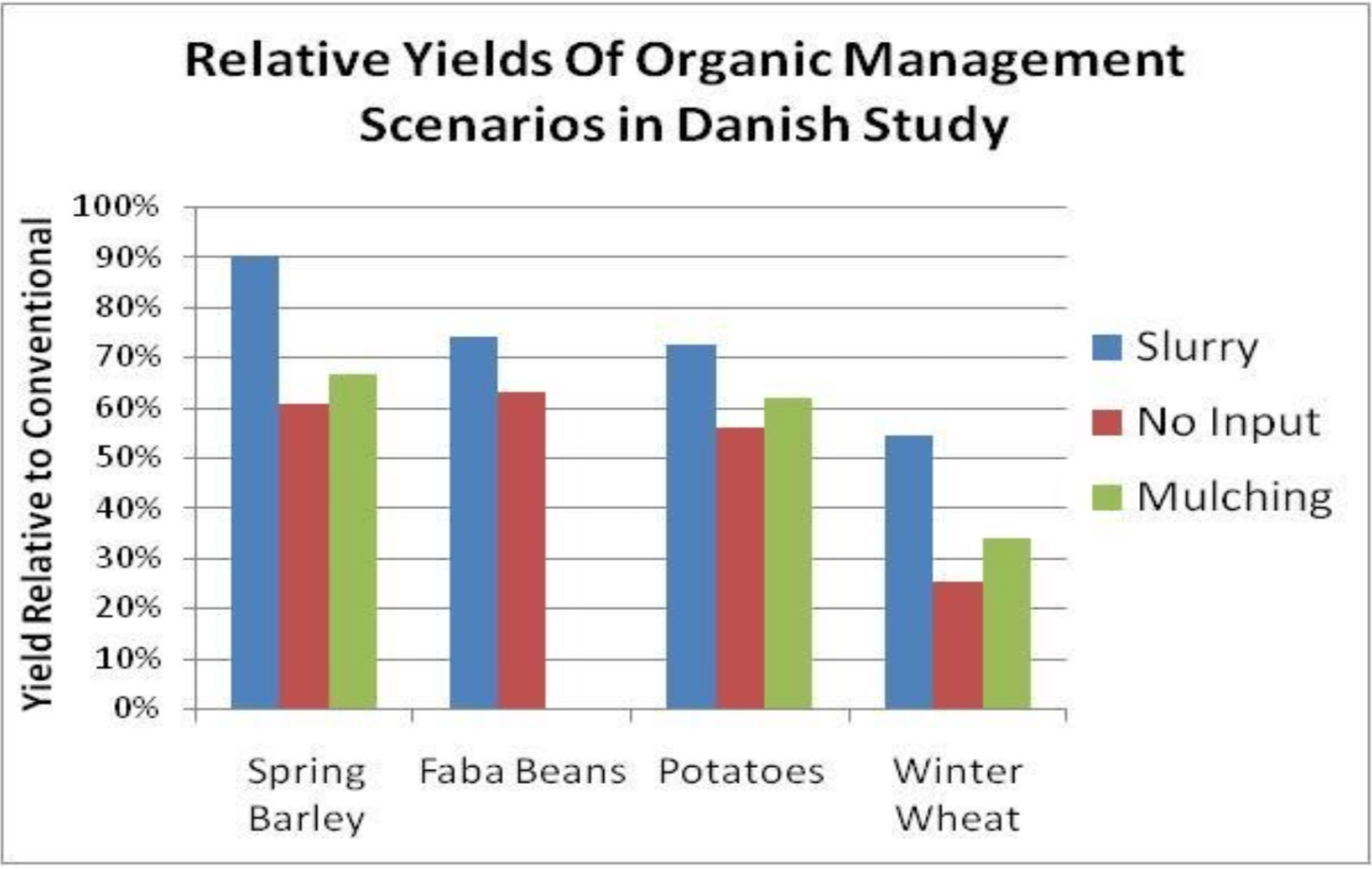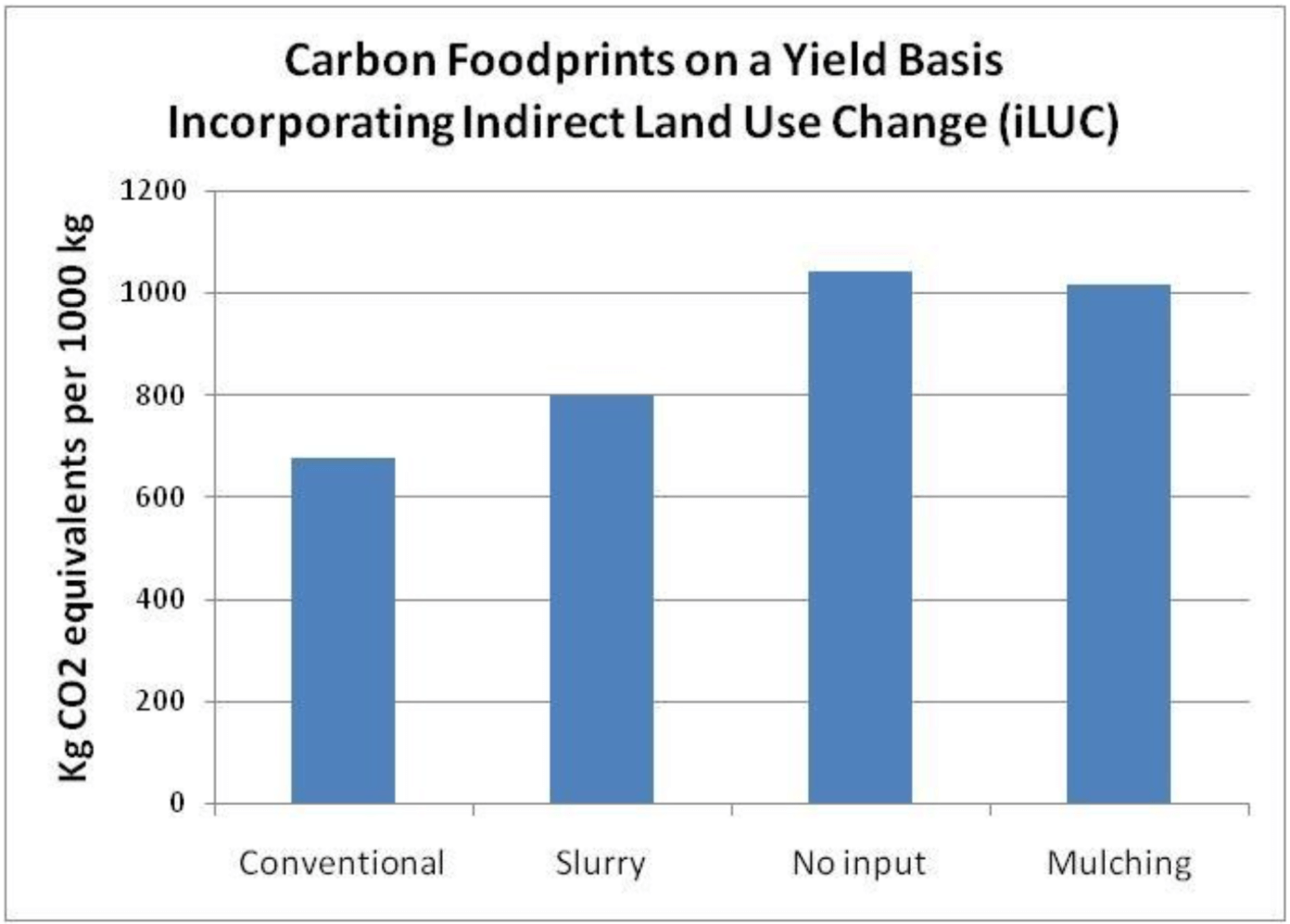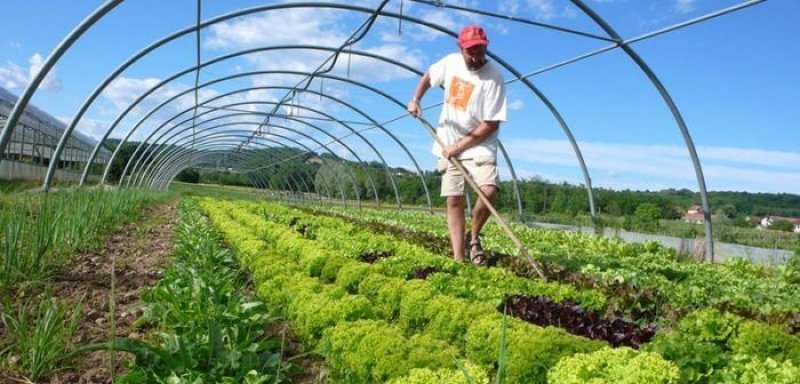Agriculture plays a complex role when it comes to climate change. Farming does contribute a significant share of certain greenhouse gasses (nitrous oxide and methane)—as much as 10% in the US BY USDA estimates—, and quite a bit of CO2 is also emitted through fuel consumption and for nitrogen fertilizer production.
However, there are specific farming methods that can help mitigate climate change through long-term carbon sequestration. Optimizing agricultural practices is part of the solution, but there is a widespread, misguided belief that the best option would be to shift to more organic farming – a belief quite prevalent in Europe, and reflected in a goal of 25% organic farming in the Green New Deal Farm to Fork strategy which is currently being debated. In fact, that would be a very bad idea. Organic farming is less productive in general and so its various footprints (land, water, GHG emissions…) are greater per unit of usable crop yield. Composting of manure to make it safer for use as a fertilizer can generate major greenhouse gas emissions. The limited pesticide options allowed in organic production can lead to greater fuel use for mechanical weeding or more frequent sprays of less efficacious insecticides and fungicides. (See this assessment).
Even though the European Union has the laudable intention to achieve net zero carbon emissions as a continent, its policy makers persist in their reluctance to allow their farmers to utilize the very technologies that could help them to play an optimal role both in terms of net emissions and the food supply. Favoring organic production is just another aspect of that anti-technology paradigm.
So, what would it take to convince policy influencers that their climate and organic goals need a rethink? In a 2019 article in Nature Communications, authors from the UK argued that that there had not been a “rigorous assessment of this potential at national scales.” To address the data gap, they undertook an extensive modeling effort to project the greenhouse gas impact of converting 100% of food production in England and Wales to organic methods.” Their conclusion:
We predict major shortfalls in production of most agricultural products against a conventional baseline. Direct GHG emissions are reduced with organic farming, but when increased overseas land use to compensate for shortfalls in domestic supply are factored in, net emissions are greater. Enhanced soil carbon sequestration could offset only a small part of the higher overseas emissions.
Conversion to organic on that scale is certainly unrealistic, but there is another problematic issue. What tends to get lost in this ideologically-charged debate is the reality that there are not just two kinds of farming: conventional and organic, and that they are diametrically opposed. In fact, there are a range of specific practices possible under both general “banners,” and they have important ramifications for both productivity and environmental stewardship. It is instructive to look at a historical example of “on the ground” research from the EU that provides data about some specific farming methods.
A seminal article was published in 2014 titled “Carbon footprints of crops from organic and conventional arable crop rotations – using a life cycle assessment approach.” Why look at this particular, somewhat dated work?
First of all, it has the “credentials” to be taken seriously both by the general agricultural science community and the pro-organic community. It was published in a peer reviewed publication: Journal of Cleaner Production. Three of the four authors are in the Department of Agroecology at Aarhus University in Denmark, a research center that does quite a bit of research concerning organic farming. Funding for the work came from the International Centre for Research in Organic Food Systems (ICROF). By all measures, the organic options were given a fair shake in the design and execution of these experiments.
For the life cycle analysis employed to estimate carbon footprints, the group included a researcher from the Department of Technology Assessment and Substance Cycles at the Leibniz-Institute for Agricultural Engineering.
Another reason the paper is of present interest: it addresses a key issue from the organic perspective, opening with this sentence:
Globally organic crop production is often dependent on imported livestock manure that is acquired also from conventional farms…The dependency on conventional livestock manure is considered problematic by parts of the organic sector and in Denmark the organic farming movement recently decided to phase out the use of conventional livestock manure in organic agriculture by 2021.
Organic farming does indeed depend to a considerable degree on conventional animal agriculture since much of its nitrogen comes from the questionable reclassification of “synthetic nitrogen” used in fertilizers as “natural” once it has passed through an animal’s digestive track.
Also, this publication is impressive in terms of the sheer effort involved in the field studies it describes. The researchers looked at five different management scenarios over a four-season crop rotation. The experiments were carried out at three locations with two replicates.
So, what detailed farming variations were included?
The “conventional” baseline treatment was a four-year rotation of spring barley, fababeans, potatoes and winter wheat. Between each of these cash crops a grass/clover “catch crop” was grown to build soil fertility (in the US we call that a cover crop and it is certainly a good practice for many reasons). Fertilizers were applied and pesticides were used for the management of weeds and other pests.
There were two organic rotations that also included the same four cash crops with cover crops in between. One was the typical organic practice for that area in which “slurry” (manure) from hog farms is used for fertilization, harrowing for weed control and apparently no “pesticides” (which does make one wonder if they were or were not using something like copper sulfate for late blight control on the potatoes). A negative control organic option was included as “no input” with no fertilization with either manure or synthetic nitrogen. Harrowing was used for weed control in all the organic scenarios.
Two additional organic scenarios involved growing only three cash crops (barley, potatoes and wheat) and substituting the fababean season with a grass/clover, “green manure” planting. In one scenario they called “mulching” that crop was ploughed under in order to provide nutrients for later crops in the rotation. In terms of carbon footprint that approach is credited with a significant amount of soil carbon sequestration although it was not measured. Since the organic scenarios involved mechanical weed control and since there was a potato crop that requires soil disruption for harvest there is reason to doubt that there would have been long-term soil carbon sequestration. In a related scenario called “biogas”, the same grass/clover planting was harvested and weighed so the researchers calculated the fossil fuel carbon emissions that could have been displaced if the crop was used to generate methane as a bio-fuel. While this is interesting, it is also an option for conventional farming.
What were the results from all this work? The conventional rotation had higher yields of the cash crops than in any of the organic scenarios. This was not a surprise; an organic yield gap has been documented in many other field experiments and using survey data from commercial farms.

The slurry scenario which represents current organic practice had the smallest yield gap and of course the no-input negative control had the largest gap. The performance of the mulching scenario seems to have been a disappointment in terms of yield. Even though a full season’s cash crop was given up to grow a “green manure” crop as a source of biologically fixed nitrogen for subsequent crops in the rotation, the yields were still lower than with manure fertilization. Thus, mulching was not shown to be a viable solution to the dependence of organic farming on conventional animal production.

In terms of carbon footprint, which is what matters for climate change ramifications, the conclusion depends on the context used to express the footprint. The organic farming scenarios had significantly lower carbon footprints on a land area basis (per hectare, blue bars in the graph above), but in terms of the more important basis of crop yield, there were no significant differences between the organic options and the conventional control (per 1000 kg, red bars in the graph above.
Much of the carbon footprint of conventional farming comes from the fossil-based energy and natural gas used to make synthetic nitrogen fertilizer in our current, large-scale systems. There are on-going efforts to reduce that part of the conventional carbon footprint by optimizing nitrogen production in small-scale Haber-Bosch systems using hydrogen generated by stranded wind or solar energy (ironically an option that would not qualify for organic until those same nitrogen atoms passed through an animal’s digestive track). Some recent modeling suggests that this sort of smaller-scale “green energy” based fertilizer is currently about twice as expensive to produce, but since the wind and solar energy could be generated in agricultural regions, the transport cost savings might narrow that gap and make this a viable carbon-reducing option for conventional farming. This research suggests that if this lower footprint nitrogen could be synthesized, the conventional option could be more desirable both in terms of yield and carbon footprint.
Bringing in the issue of land-use
Near the end of the discussion section, the authors acknowledge that since the organic scenarios produce lower yields, consideration should be given to the carbon footprint associated with any additional land that would need to be farmed somewhere else to make up the shortfall – something usually referred to as “indirect land use change or iLUC. The reason given for why this issue was addressed near the end of this publication and not in the main tables and charts was
…there are still discussions and no well-accepted method and no agreement on whether iLUC should be included in life cycle assessments.
The authors did; however, go ahead and report an additional carbon footprint calculation that factored in iLUC using a value from a World Wildlife Fund supported project. Adding that realistic perspective, the conventional scenario ends up with a lower carbon footprint than that of any of the organic options. (See graph below).

Overall, this ground-breaking life cycle analysis has proved enduring and enlightening in shedding light on the ongoing debate over the sustainability impact of organic vs. conventional agriculture. This one study provided data addressing several topics:
- The overall organic “yield gap” was confirmed in this setting
- The “mulching” approach did not represent a viable alternative to organics’ dependency on conventional animal livestock manure for fertilization
- Devoting part of the rotation to biogas production reduces the overall carbon footprint, but that would be possible for conventional as well
- The carbon footprint of organic is only lower on an area basis, not on a more appropriate yield basis, and particularly not if indirect land use is considered
- Overall, organic farming expansion is incompatible with the European Union’s stated ambition to achieve carbon neutrality as a continent.
This is a complex and critically important topic that deserves both high level theoretical assessment and on-the-ground experimentation. The eight year old Knudsen et al paper described here represents a good example of real world data generation, and it’s without ideological spin. EU policy makers should be looking at this sort of data to inform their thinking about how align their agriculture with their overall climate goals. Optimized conventional systems are a more promising option than pursuit of the speculative, organic-leaning path proposed under Farm to Fork.
Steve Savage is a plant pathologist and senior contributor to the GLP. Follow Steve on Twitter @grapedoc































